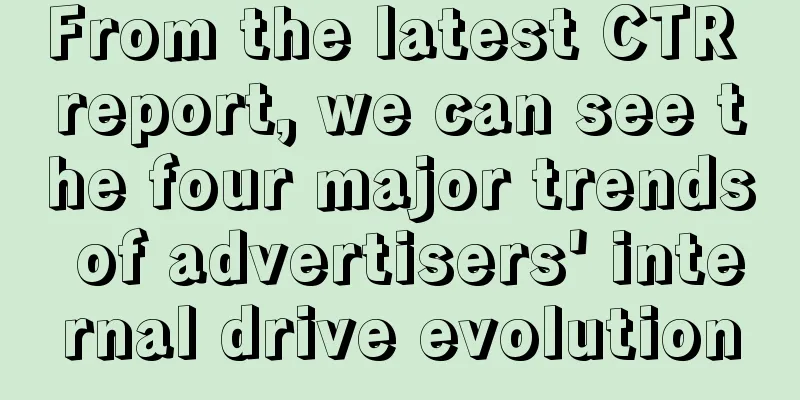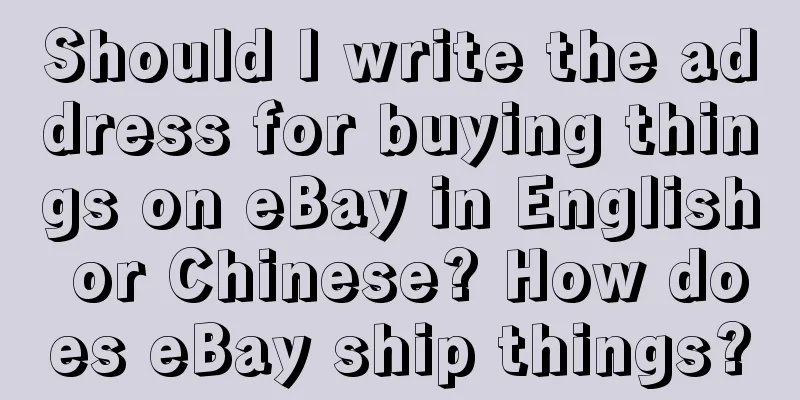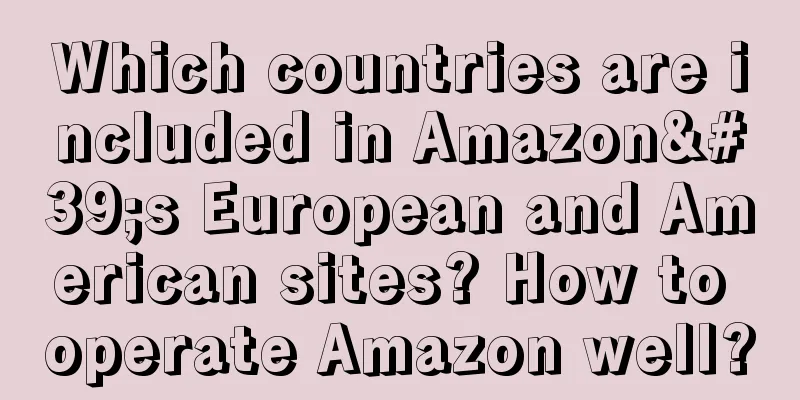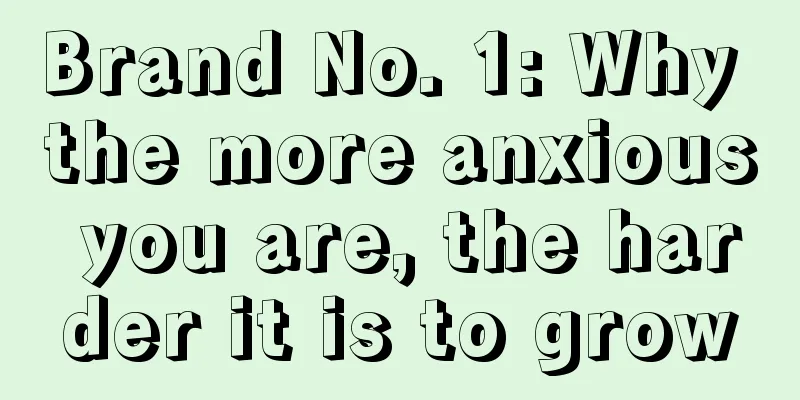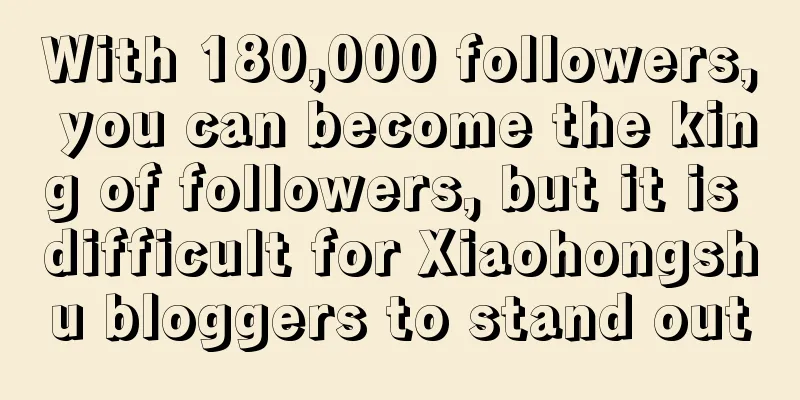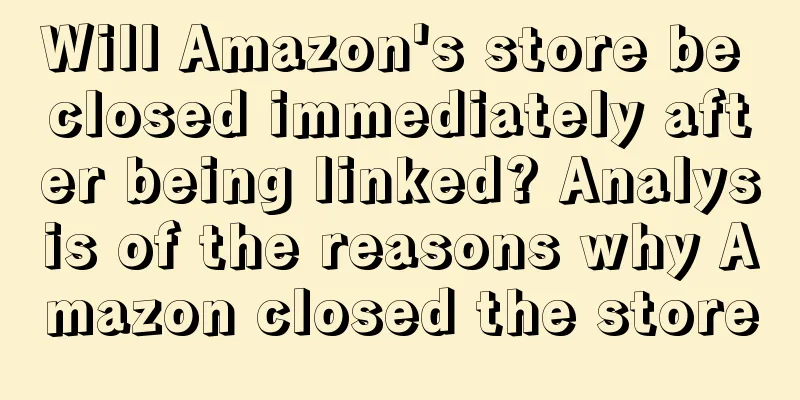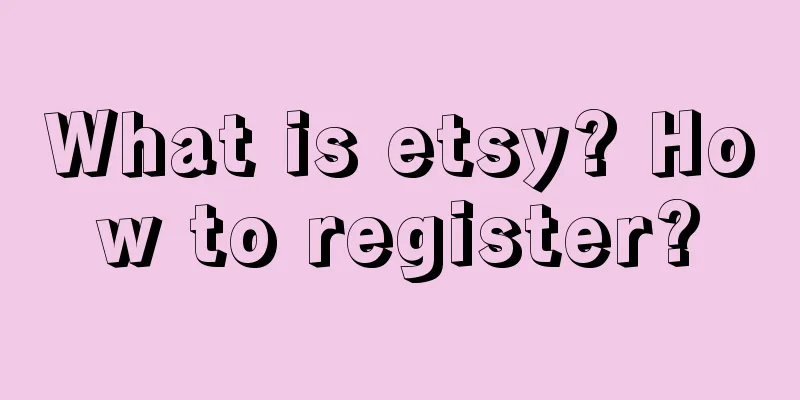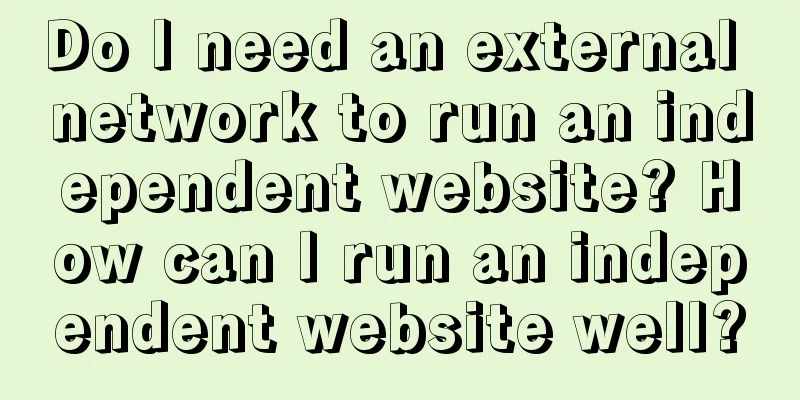Why is a commercial manuscript so expensive?

It wasn’t long before my friends in marketing communications would ask me questions. Similar ones are:
Indeed, when I was working for Party A, my boss also asked me the same question. Before he understands, he will angrily slam the table and say: "What a ridiculous request! Sooner or later, one day, I will acquire several self-media companies, and the profits will be more than what I make from e-commerce." This type of issue has been discussed in the industry and between parties A and B for many years, but no one has ever discussed it publicly before. Even those who later entered the commercial self-media industry only have a vague understanding of it. High readership and high number of likes are not the only reasons why commercial articles are expensive. To understand all this, we must first understand the “nature of corporate communication.” 01Think about it: What is the essence of communication? We live in the real world, but we are also surrounded by the world of news and social media. Do you feel that the hot news online has become more and more confusing recently? for example:
You may support someone you don’t even know on Weibo, thinking that they are very wronged, but when you check you find out that the person is in debt because of selling counterfeit goods and spreading rumors. Or, you feel unfair for a fruit store that suffered losses due to malicious purchases, only to later discover that the store owner was pretending to be a farmer and using fabricated stories to deceive consumers. The mixture of these two worlds makes it difficult for us to distinguish what is true and what is false, which are facts and which are opinions, who needs help, and which brands are good or not. Switch to the brand perspective. In the past, frequent advertising on TV would lead to growth. Have you ever thought about the reason behind this? Was it because the TV medium was chosen right? Or was it because more people watched TV at that time? In fact, advertising creates knowledge and opinions in the limited media that the audience can access, and "opinions" are what the advertisement wants to convey. Media is a way to help information spread. Simply put, the advertising logic is: In a closed space, change user perception and form a new consensus. It is different now. There are so many media channels that it is difficult to change consumers' views, but there are ways. Think about it, how do sales meetings drive people crazy? They lock people in a room, prevent them from getting any information from the outside world, and only feed them prepared content. Therefore, the real purpose of communication is to "reduce the cost of trust" What is the cost of trust? Find a place in the vast public space to gather people together, use information to make the audience (target group) reach a consensus, and thus change their views on the brand. Seeing this, you may say: "This is too theoretical. I can't preach to my boss. Can you make it more popular?" Of course. For example:
What should I do? An idea suddenly came to my mind. You know the group owner, and he also knows the group owner. If you ask the group owner to introduce you, wouldn't that solve the basic trust problem? Therefore, first of all, the commercial article itself is like a group owner, "making the cost of trust lower" . After others believe in a certain brand through the content of a certain account, the intermediate cost becomes smaller and the transaction efficiency is naturally improved. 02Is it expensive? Of course not. There is also a second point: the communication cost in the middle. What's the meaning? Simply put, the extra costs that we incur between each other, or between multiple parties, due to information inequality, such as the cost of spending time, coordinating efforts, and verifying the accuracy of information, are all communication costs. When a brand wants to convey a message, there are usually two ways. First, find an industry expert to speak, but the expert may only have professional knowledge and may not be able to express himself well. The only option is to find industry insights and let them speak for you. Do you know what the intermediate process is? Take the clients I have worked with for example: a feature article takes at least a week to produce. Why is it so long? In the first stage, after receiving the brief from the client, I have to first understand what the client’s real intention is and what they want to say. Nowadays, the business is complex and clients want to express a lot of things. It is common for there to be inconsistencies in understanding. Then what? The second stage is the first meeting, where we exchange ideas with each other, reach a cognitive consensus, and then discuss how to perfectly present the content from the perspective of the brand, self-media and readers. Think about it, as a reader, if I don’t take your feelings into consideration and just put a big picture and a hard advertisement in front of you, you definitely won’t buy it, right? The manuscript framework is only available in the third stage. The outline should clearly define the content of each part. In addition to the information provided by the brand, you also need to consider where to obtain factual data, objective information, etc. All of this is prepared and formed into an online document. Only when the brand feels that there is no problem will they start writing the manuscript. Writing is easy, we have AI now. But is what AI writes useful? AI can help check typos and optimize sentences, but when it comes to expressing professional content, people still have to do it. It is no exaggeration to say that it takes at least two days to write a complete business draft. Do you think it's over? No. The next step is to revise the manuscript. How to revise it? I once wrote an article for the vice president of a leading company. Their process was as follows: the public relations department first reviewed the basic information from the perspective of public opinion, the content team checked whether there were any problems with the sentences, and the legal department verified whether the numbers were accurate. And many more…. Finally, I remember that there were 8 people online at the same time in the collaborative document of that manuscript. In the WeChat group communication project team, although they seemed to be silent, almost everyone had their own tasks and strictly reviewed the content. Therefore, it is not excessive to go back and forth several times for a manuscript, and all the costs are considered "communication costs". I see that many self-media outlets nowadays do not accept revisions. You can do this unless you have certain abilities. Most of the ideal scenes do not exist in reality. Oh, right. There are also initial communication costs and interview costs. What does that mean? Some content PR departments cannot control so many details. They will say: "Teacher, if it is convenient, I can create a group and let you talk to the business manager first to see when he is free. Let's have an online meeting and do an interview." At this point, things become complicated. There are two types of people who do business: one type is the one that doesn’t like to talk, and they treat the question-and-answer interview like a task, so you won’t get any in-depth answers at all; the other type is the one that talks a lot, and they hope that you can write all the information you provide into the article. Although it is fun to chat, after the chat, you have to convert dozens of minutes of voice into text, extract the core ideas from the text, and then integrate these ideas into the article. This series of steps will cost a lot. If you encounter a few people who don't speak standard Mandarin, it will be even more difficult. Therefore, the cost of communication is the second largest cost. Do you agree? After seeing this, do you still think it is expensive? 03Still expensive? Let’s talk about the third reason: explaining the cost. You may ask, what is there to explain? It sounds boring. But in fact, explaining this is very important. For example: I don’t play games very often, but one time my friends asked me to play Dota, and they told me to choose a character that can “carry the line”. I was completely confused, what does “carry the line” mean? As a result, we lost that game. Later I understood that "leading the line" means choosing a hero that can quickly clear minions, easily escape, and move flexibly on the battlefield (it would be even better if it can summon units to destroy enemy towers). This is the same as learning. No matter what kind of knowledge it is, the standard for truly mastering it is to be proficient in using the high-level concepts in it . So, the question is, why do we have to create a few more words for something that can be said in normal language? One of the reasons is that creating new concepts can help brands describe new technologies and strategies and increase business barriers. Think about it, there are a bunch of complex elements and principles behind each concept. When we need to think about more complex problems, isn’t it more convenient to use these concepts directly? For example: FACT management, global reach, private domain coverage, ecological advertising, marketing science, and mid-term explosion in the marketing circle; cognitive surplus and national total time in the knowledge circle... Once these words come out, we only need to consider the relationship between concepts without having to reload the principles behind each concept. When we communicate with others, our efficiency will naturally be much higher. Another reason is that concepts can help users quickly identify products and services, allowing them to stand out in the fierce market competition. For example, when you mention French fries, you may think of Xiaohongshu; when you mention a better life, you may think of Douyin. Actually, one word is fine, but what will happen if a bunch of words are put together? There is nothing wrong with it, it's like a heavenly book. That’s right, the so-called explanation cost is to translate these difficult professional terms into words that everyone can understand. This task may seem simple, but it actually tests basic knowledge. Some time ago, I wrote an article about advertising for a company, emphasizing that their advertising can bring definite growth to the brand. I was confused when I received the requirements, because it was full of conceptual words. How can I make others understand? Pile up some professional and difficult things and say them directly? This will scare away readers and customers and make people feel overwhelmed. So, like a beginner, I learned the business logic bit by bit. After understanding it, I simplified the complex professional knowledge, transformed it into basic principles and rules, and explained it in plain words. This is the cost of explanation. Providing common knowledge makes communication more direct and easier to understand, helping customers quickly understand what is going on, and can influence the final decision. 04If you think the above is not enough, let’s talk about the fourth point: endorsement cost. Endorsement is recommendation, which is not difficult to understand. Imagine that when a new book is to be published, it is always necessary to find a few bigwigs to write recommendations, which can increase the trust and exposure rate, and make more people willing to buy it. In business articles, endorsements also have three invisible and invisible places:
You have to understand that a review is like a stamp. As an account owner or a media company, it is important to be willing to review and recommend a brand. Some time ago, the rear end of a certain car was labeled as a "funeral label". How difficult is it to get rid of this impression? If we make some objective and positive comments about the brand through the cooperation of media and KOLs, would it be equivalent to changing the perception of a group of people? You should be aware that reputation is extremely important in the business world. It is not uncommon for some companies to encounter public opinion crises due to equity disputes and investment issues. For example, last year, some celebrities and their friends formed an investment company, and the investment company then invested in a company that caused a public opinion incident. The user reviews were fed back to the celebrities, who were labeled as not doing their job properly and evil capitalism. In this case, if there are media and KOLs willing to stand up and support "there is nothing wrong with this company", wouldn't it be able to change people's views to a certain extent? Recognition and credibility are two different things. Many products and brands are good in themselves and can effectively solve customers' problems, but they just lack the "fuel" from professional organizations, experts, and celebrities. Some SCRM and low-code platform companies around me are in the middle of the second tier. They sort out the success stories of their customers and conduct product reviews through niche but focused media, experts or KOLs, hoping to have some influence in the industry. This method is also very good. So, how much do you think a simple endorsement is worth? Seeing this, many people will still think: Investing so much money in a collaboration always feels not cost-effective psychologically, and it is better to invest in more small channels. Of course, there's nothing wrong with that. However, don’t ignore a key point: “influence leverage effect”. Simply put, if a brand (person) is not famous enough, it should seek help from particularly prestigious media or people in a specific field. Doing so can help you save a lot of promotion costs in the future. However, if a shotgun strategy is adopted from the beginning and no concentrated efforts are made to create a strong influence, the accumulated publicity costs will eventually be even greater. If you still don’t understand, let me give you a few more examples: think about famous IP figures such as Lei Jun of Xiaomi, Zhou Hongyi of 360, and Luo Yonghao in the live streaming industry; or car companies like Tesla, and more consumer circles such as Yuanqi Forest, Coca-Cola, etc. Once these brands and individuals become widely known by the media and KOLs, their subsequent marginal marketing costs will gradually decrease. Intermediary communication costs, explanation costs, interview costs, endorsement costs, and the cost of reducing trust between users and brands ; all of this, I wonder if this explains why a commercial manuscript is expensive and why it is so expensive? Next time your boss asks you, you can try to explain it. In summaryAccurate information improves intermediate efficiency. Brands need to deliver information to those who need it as much as possible in order to speed up the transaction process. So, what kind of communication is better? The key is whether the transaction cost has been reduced and the connection density has been increased. Author: Wang Zhiyuan Source: WeChat public account: Wang Zhiyuan (ID: Z201440) |
<<: Heavy assets vs. light assets: Thoughts and choices on the road to entrepreneurship
>>: B Station e-commerce must pass three tests
Recommend
Seven predictions about Xiaohongshu’s “buyer e-commerce”
What opportunities might the "buyer-based e-c...
Some practical suggestions for Xiaohongshu placement
This article points out that seeding requires a lo...
Video accounts severely crack down on false advertising by merchants and influencers
Recently, WeChat officially released the "Not...
Who killed Google Search?
This is the story of how Google Search died. Throu...
How to promote Wish platform? Introduction to promotion methods
The order placement speed of the Wish platform is ...
What does Amazon International Station mean? Can you make money?
Some platforms have international sites, such as o...
If you want to increase monetization through IP, you must first know what personal brand IP is?
Want to improve your monetization through IP? Befo...
Where will merchants get new sales during this year’s 618?
Have you paid attention to this year's 618? Do...
What should I do if Amazon keeps asking for a verification code when logging in? Why can't I log in?
If you want to buy foreign products on Amazon, you...
How to advertise at zero cost
In this article, the author selected the well-know...
Do cross-border e-commerce companies recommend Shenzhen? How to open it?
In the context of globalization, the cross-border ...
It’s 2023 now. Does Alipay still have a chance to do live streaming?
In the past few years when the live broadcast indu...
After publishing the Xiaohongshu notes, how to activate the system's multiple pushes!
On the Xiaohongshu platform, many businesses are f...
How to run Amazon video ads? Are video ads effective?
Placing video ads on the Amazon platform is an imp...
Valuing Xiaohongshu: Where is the upper limit of “lifestyle e-commerce”?
Xiaohongshu, a platform that started as a content ...
